We have likely all been told “the future of the world is in your hands” at some point in our lives. Well in this day and age, the future of the world is quite literally in Generation Z’s hands.
Generation Z, also known as Gen Z, is the newest generational cohort of individuals born between the years 1997-2012. These individuals are technical experts with a deep passion for social and environmental causes, who value independence and are certainly no strangers to going after and getting what they want.
Generation Z is beginning to fill in the population group of young professionals in the workplace. They bring a fresh and unique perspective, perhaps shaped by the impactful events they have endured and overcome during their lifetime. Their one-of-a-kind characteristics, digital fluency, and drive for change and success make a lasting impact on the workplace.
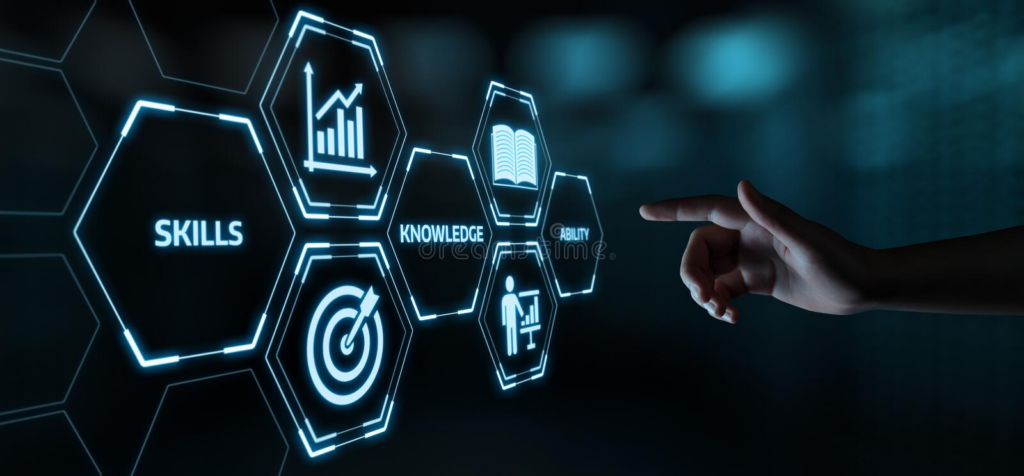
Gen Z was raised being immersed in technology and thus are not fazed by our constantly evolving and digitized world. This generation is known as “digital natives,” hinting at their innate ability to process and utilize a variety of technology. Growing up in a world that is driven by social media, smartphones, the internet, and constant connectivity, Gen Z implements a new way of thinking, communicating, creating, and understanding digital tools and platforms in their work routines. These proficiencies have led to tremendous growth in organizational efficiency.
As many of us experienced, the Covid pandemic greatly changed our way of normal life. For example, the way we traditionally viewed and did work is not that way anymore. Instead of the typical 9-5, 5-days-a-week work schedule, we are seeing upward trends in working remotely with a more flexible schedule.
Gen Z is a population that favors a work-life balance, so it is no surprise that there is an increase in demand for flexible schedules and remote work options. However, this remote style of working is only feasible if employees know how to use technology, which is a key attribute of the Gen Z population.

As mentioned previously, this generation has strong opinions and is not afraid to advocate and fight for what they believe is right. Gen Z is often the main group of individuals who protest controversial topics and demand changes. They are committed to fighting for justice for all and doing what is ethically right.
In the workplace, this mindset will come in handy as they will always generate new ideas with different methods for implementation. Gen Z employees do not fall into the common “groupthink,” but instead, they challenge their co-workers by presenting different and unheard perspectives. They push for corporate social responsibility, they are committed to their work, they are considerate of other employees, and they are driven to achieve success for their company.

One way Gen Z has uniquely influenced the workplace culture is through their continuous desire to learn and seek growth opportunities. They enjoy “social learning environments, where they can be hands-on and directly involved in the learning process.” In other words, they value involvement and interaction, and being in a fully immersive learning environment. In the workplace, this means they value the opportunity of taking on a task themselves and being given extensive feedback and mentorship through the completion process.
Generation Z has also proven to have a strong desire for autonomy and entrepreneurial opportunities. One key factor that has influenced this craving is Gen Z’s parents and guardians.

Most of Gen Z’s parents are viewed as “helicopter parents,” who tend to be very traditional in their ways, opposed to change, and are very career driven. While Gen Z is very driven in their careers too, it is for a different reason.
During the 2008 recession, a lot of Gen Z saw firsthand their parents being laid off from their jobs. This initiated a mindset and attitude of “I’m not going to let this happen to me” and brought about a strong desire for independence. “There’s an independent streak about Gen Z in taking care of their future; they don’t have it all figured out, but they don’t see the point of working for a big company for any number of years when they can just lay you off with the snap of a finger.”
Mental Health became increasingly important after the Covid-19 pandemic. Living in a time that was so dark, with limited interactions and places to go, and no light at the end of the tunnel visible, Gen Z’s and the overall population’s mental health suffered. However, because we all survived it, we are mentally tougher and more aware of how to take care of our minds.
Gen Z has made it a priority to support and focus on mental health and wellness awareness. They are taking action by being willing to discuss their mental health, prioritizing it even more than their physical health, and they are implementing wellness programs and other mental health initiatives. As a result, we are seeing Gen Z’s heightened awareness and attention to mental health, we are seeing them advocate for a work-life balance with a flexible schedule, and we are seeing their demand for supportive and inclusive workplace cultures.
Gen Z has undeniably left a lasting impact and brought about significant changes in the workforce. Their tech-savviness, dedication to creating a just environment, eagerness to learn and grow, drive for independence and success, and increased prioritization of mental health are just a few ways they have changed the way we work.
Organizations must be ready to adapt to these needs, as they are the newest and upcoming group of working professionals. Gen Z requires workplace design to be a priority for companies they consider working for, which means creating a workplace that addresses the unique needs and drivers of this generation is a lever that your organization can pull to attract and retain this important talent pool.
If you need help implementing these organizational changes and maximizing your company's “culture, brand, and unique values,” then Workplace Integration is here for you! After all, Gen Z is in control of what our future looks like.
Company culture is no longer handled as it was in the past. It’s not just a mission statement and core values, and some small employee incentives such as catered lunches or employee birthday celebrations. Company culture is defined as a shared set of values, goals, and practices that make up an organization, both internally for its employees and externally as part of its public image.
The culture of any company starts at the top with leadership. Employees look up to their leaders and managers. Employees want to know that their leaders care about each of them as an individual, recognize their importance and contributions, and appreciate their work and efforts. They also want leadership that provides clear communication, listens to their ideas, and is honest with where they see the business going.
Today, company culture is an important component when candidates are considering a job offer as it ultimately impacts everything- including their personal happiness and career growth. Companies have no option but to create a healthy and productive company culture to ensure employee satisfaction and the hiring of qualified candidates.

Here are seven ways companies can improve company culture and employee satisfaction:
Employees look up to their leaders and managers and a successful company is built upon trust. It is important for leaders to be transparent about company policies, expectations, salaries, where the company is headed, feedback, and concerns. Creating transparency strengthens company culture and creates trust which results in employees feeling included and valuable.
Some of the best feedback companies receive come from their employees. However, if they feel as if they cannot voice their opinions and ideas they are unlikely to share them with management. It is important that companies are making their employees feel comfortable voicing their concerns and not fearing repercussions.

Mental health support is no longer a bonus to working for a company, it is a necessity. Poor mental health can lead to poor job performance, burnout, lack of social engagement and interactions, decreased productivity, and even death. Since people spend about one-third of their life at work, companies need to make sure they are taking proactive approaches to provide their employees with easily accessible services and resources to keep them mentally healthy.
A good leader supports their employees and the employee’s career development. As a leader, your guidance and encouragement can help employees gain new levels of confidence, develop new skill sets, and reach new career opportunities. This support lets the employee know that you care about them and their future. This will then also benefit the company by increasing productivity, improving morale, greater engagement, reducing turnover, and increasing loyalty.

Employers need to remember that employees have a life outside of the office. Poor work-life balance can lead to fatigue, burnout, increased absenteeism, increased stress levels, poor performance, high turnover, and poor physical, mental, and emotional health. When companies are understaffed or employees are expected to check emails outside of normal business hours employees will lose motivation. Employers need to lead by example: encourage employees to take their paid time off, offer flexible working arrangements, and establish boundaries between work and personal life.
Everyone deserves a pat on the back sometimes and when employees are recognized for a job well done in the workplace, they will feel valued and more connected to their work, team, and organization. In addition, employee recognition increases employee satisfaction, increases motivation, and engagement, improves team culture, leads to better performance and business reports, and increases retention of quality employees.

Little physical activity during the day can lead to many health problems, and increased risk of heart disease, hypertension, type 2 diabetes, depression, obesity, and even death. Employee wellness programs aim to improve employee health and wellness.
By prioritizing employee well-being, the employer can help employees reduce the risk of certain illnesses, manage stress, reduce burnout, and increase productivity and performance.

In conclusion, we understand how important company culture is. Creating a culture and environment in the workplace is a critical part of ensuring your company's success and should be a top priority to retain employees.
An article from Steelcase stated that a study was conducted that found companies that has an impactful workplace culture outperformed those who did not in areas like return on assets, sales growth, and market value.
As stated above, company culture isn’t just a mission statement and core values anymore, it is made up of multiple factors such as employees health and wellness initiatives, recognizing employees, etc. Making sure the top executives in your company represent this culture well and implement it into the workplace is key.
The same Steelcase article states, “leaders hold a key role in reflecting culture and sending messages—intentionally or unintentionally—about culture’s core characteristics”. Company culture isn’t something organizations can ignore, it is something that needs to be shown off in order to retain quality employees.
Whether your company is looking to incorporate collaborative working spaces in the office, update outdated office furniture, or maximize your current space, Workplace Integration is ready to help. Get started today.
A workplace's interior design and space planning play a large role in the productivity and overall well-being of a company and its employees. At Workplace Integration, we believe in workspace design that is “human-centered”.
A well-designed office can promote feelings of calmness, leave employees feeling comfortable, and have a positive impact on their health, as well as their collaboration and engagement.
The first steps to building the ideal office environment begin with design and layout. Keep reading to see how some iconic American brands have used design, lighting, noise, and creativity to boost their employee’s effectiveness and willingness to work hard.
There is no denying that these companies are successful, but how much of their success can we accredit to their unique office spaces?!
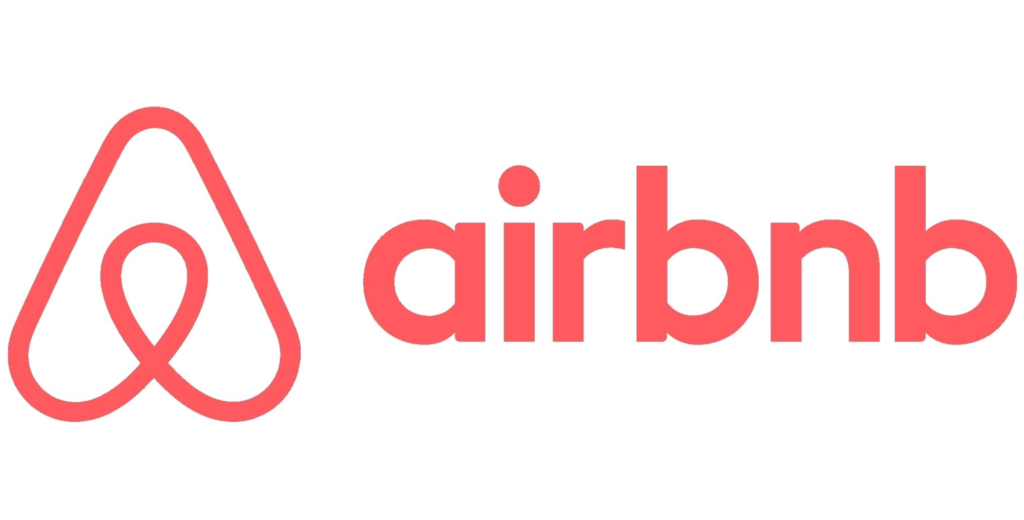
Coming in first place is the Airbnb Headquarters office, located in San Francisco, California.
Airbnb has shifted how we travel and made finding a place to stay simple and affordable. Its online community has shifted the “norm” from hotels to homes, which is demonstrated in its headquarters, which resembles a home more than an office.
In 2013, when the company relocated to its current office space in San Francisco, it aimed to recreate the look and feel of some of the most popular listings on the Airbnb app, according to IDF Studio, the design company involved in creating the workplace masterpiece.
Each part of the office reflects a unique home style from different parts of the world. For example, the study and meeting rooms have been developed into the shape of camp tents and Norwegian houseboats. The cafe is Mumbai-themed, and the living rooms are based on elements found in Rio de Janeiro. The most interesting attractions are the work and relaxation areas set up exactly like the founders’ actual apartments in the city.
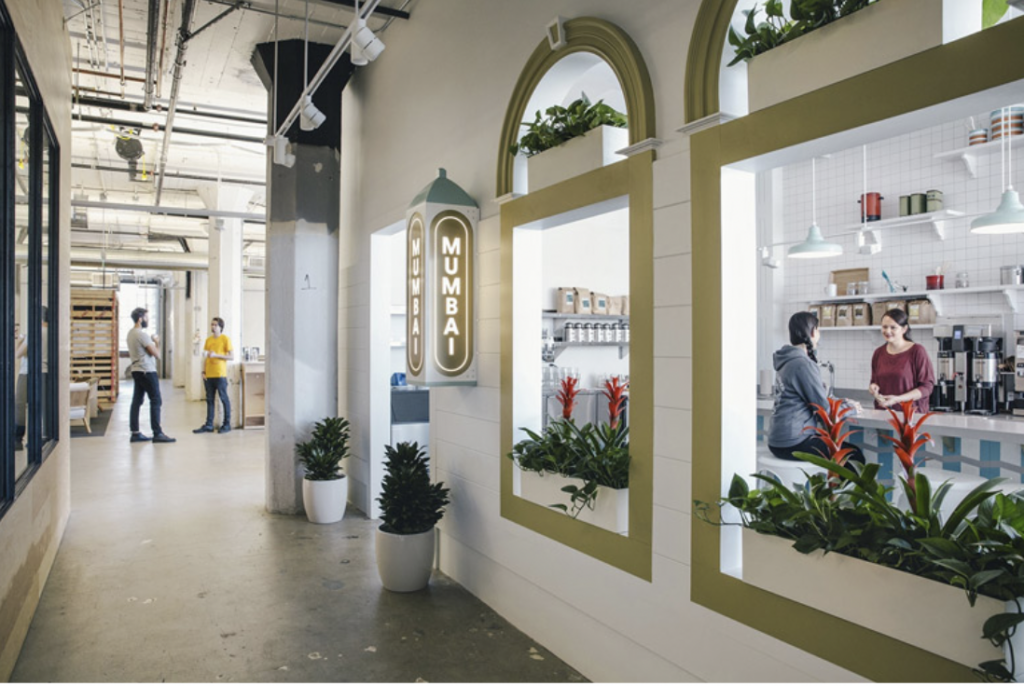
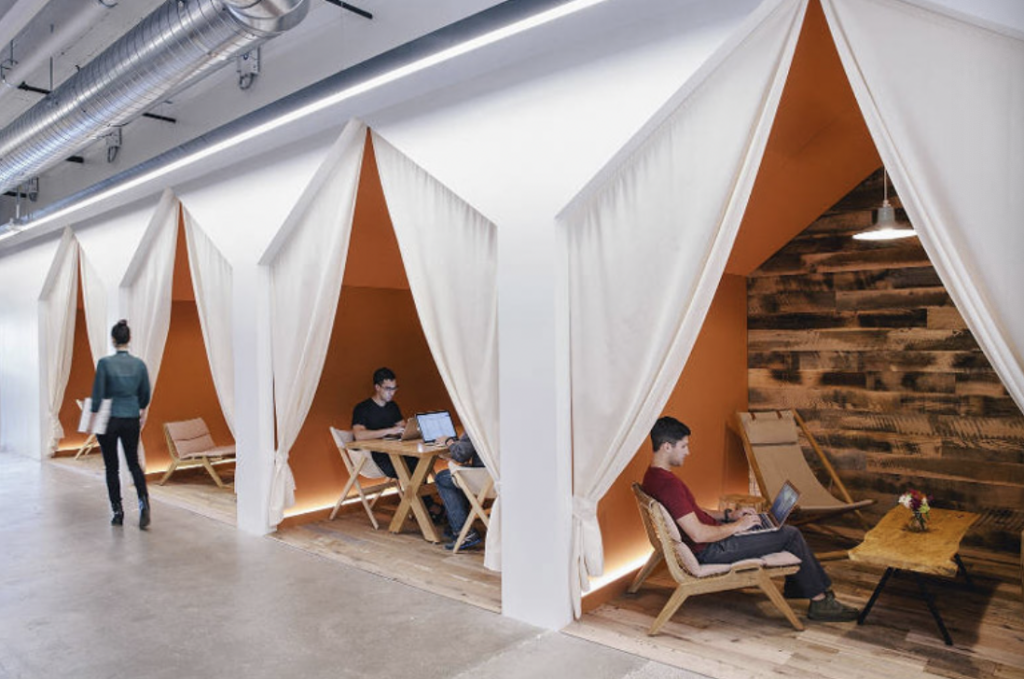
Airbnb excels at making employees feel comfortable and at ease in their workplace. A majority of people spend more time at work than they do in their own homes, and at Airbnb, employees can feel at home at work.
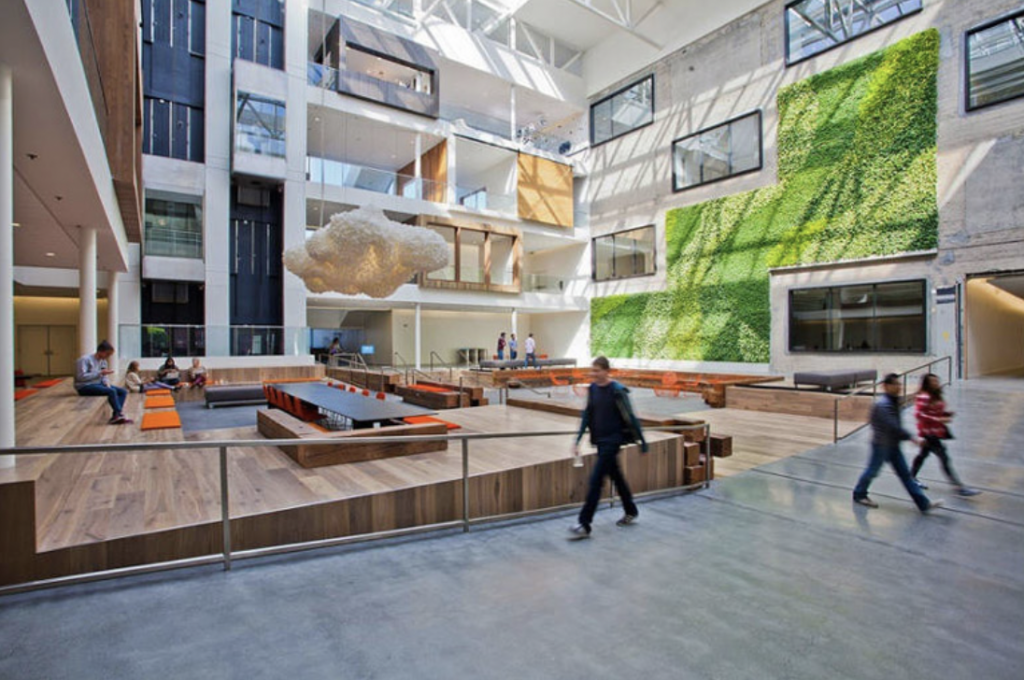
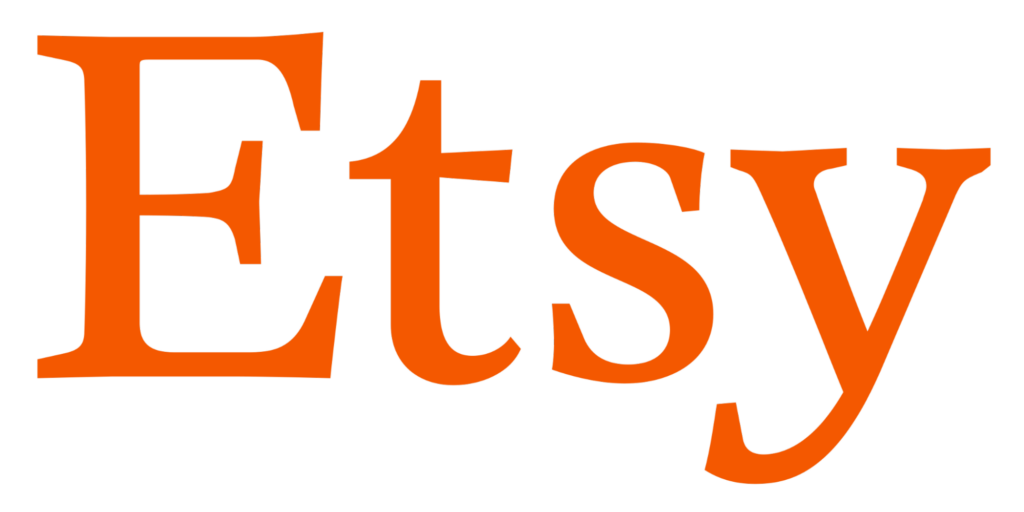
The popular e-commerce site that makes buying and selling handmade and vintage items on the web easy comes in second place concerning office design.
The Etsy Headquarters in Brooklyn, New York, is more than just an office, featuring entertainment rooms like recording studios, yoga studios, laboratories, and design shops. How many people can say they can record a song after a long day in the office?
Each floor of the nine-floor building offers a uniquely different experience. The first and second floors highlight a cable-wire staircase connecting the two areas, made from wood from the original rooftop water tower and demonstrating artwork by Etsy makers woven through the wires.
The next floor accentuates what Etsy calls the “Green Embrace,” the idea of bringing the outside in. Greenscape makes this floor feel more like a treehouse than an office.
The sixth floor is open at night to the community and employees for a combined enjoyment of the perks of access to amenities ranging from wet and dry labs, sound rooms, and recording studios. Locals can even attend workshops and hear from Etsy makers at speaking events.
You can find work and meeting spaces on the seventh and eighth floors. Employees have access to standard workstations as well as standing-height spaces. Meeting spaces are plentiful, some designed for individual phone calls and others for collaboration.
Of course, these features are extraordinary, but the two that stand out the most are the terrace and wellness suite. The ninth floor of the building is a half terrace and half amenity space where employees can refocus and get fresh air. The wellness suite is home to a mother’s room, garden library, and yoga studio.
Etsy hopes to be a trend-setting and game-changing workplace. Etsy emphasizes its employees’ needs and wants and the surrounding community, which is a trait of a well-designed office space.
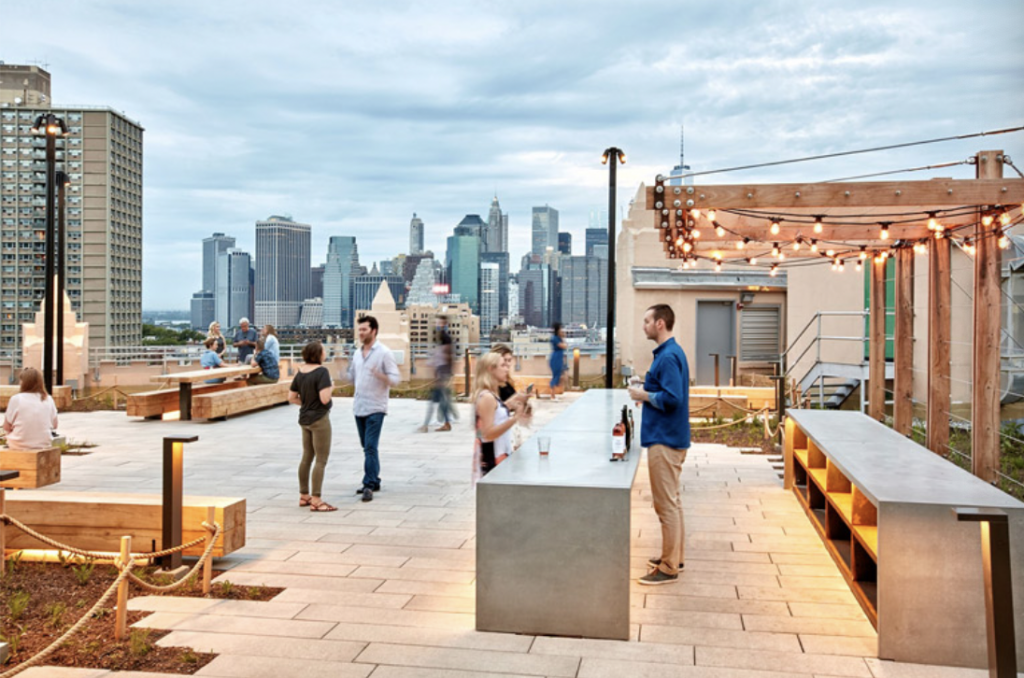

Employees enter the office daily through a tunnel, similar to one that leads into a stadium, to make them feel like an athlete and embody the brand's personality.
On brand for Nike, the office design highlights some historical and famous New York sports moments through graphics, illustrations, colors, and typographies featuring many Nike-sponsored athletes like LeBron James and Tiger Woods.
In addition to the freelance office spaces, terraces, library, and fitness studio, the Nike headquarters also features an indoor basketball court, which hosts local high school team games to provide for the community.
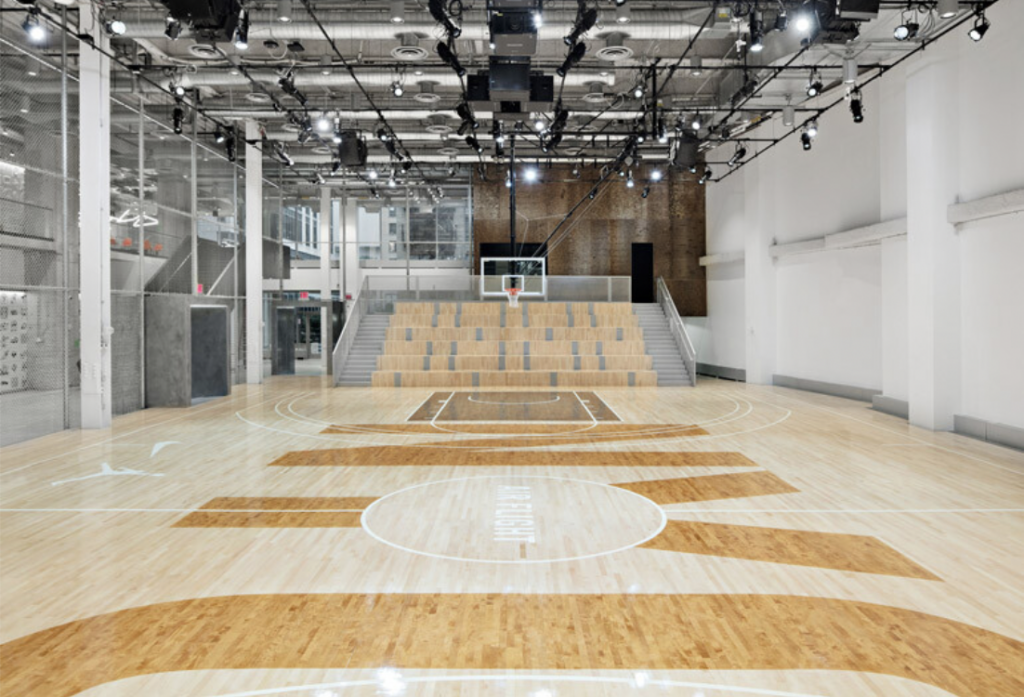
Arguably the most notable feature of the iconic New York City Nike Headquarters is the 90-meter-long logo on the rooftop, which is visible from the top of the Empire State Building. However, the iconic basketball mosaic behind the Michael-Jordan-themed coffee bar gives that feature a run for its money.
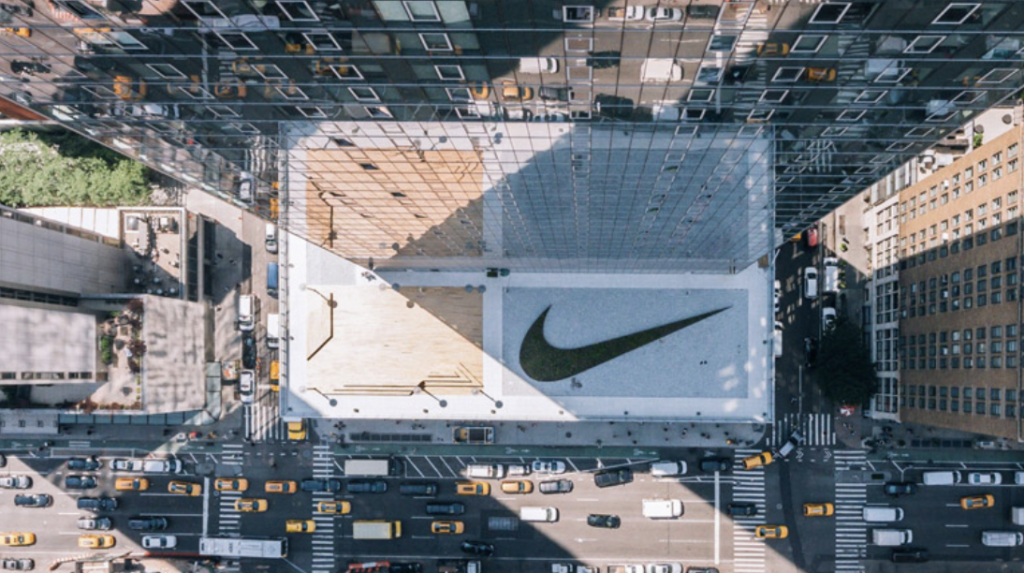
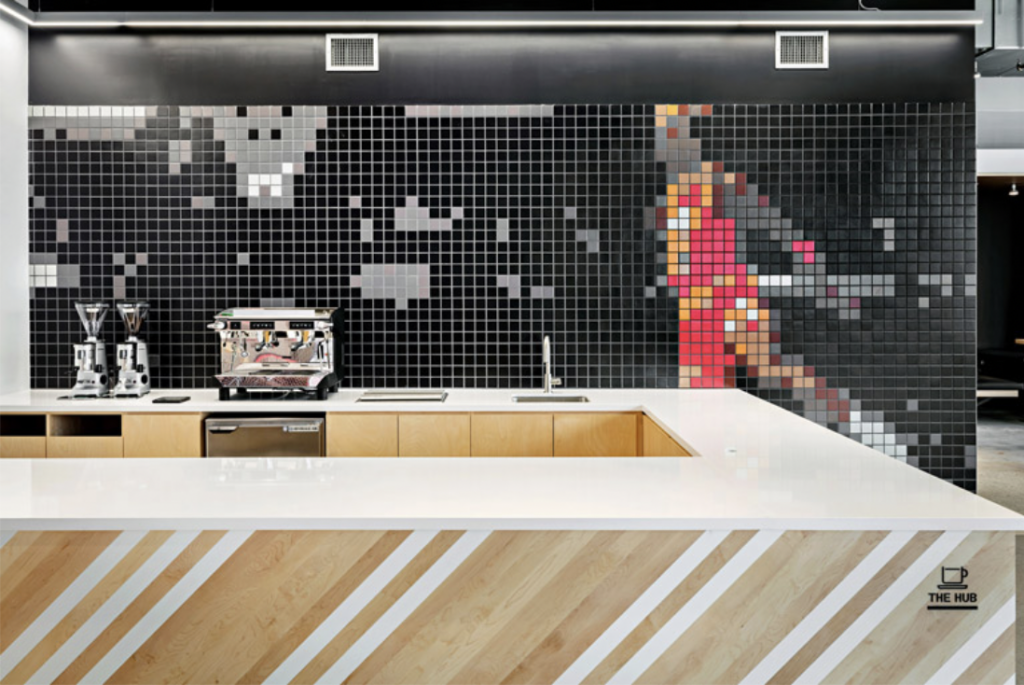
What is so amazing about the design of the Nike headquarters office in New York City is its true reflection of the brand. STUDIOS Architecture, the building designer, took the things that make Nike an iconic brand and brought those things to life through interior design and space planning.
The design and layout of your office space can make or break your company and its success. How you leverage your space and add bonus amenities can help you maximize the productivity and excellence of your office.
Workplace Integrations wants to help you utilize your office to enhance your brand, culture, and business processes. Contact Workplace Integrations today for more information.
When brainstorming what the perfect workplace design would look like, what comes to mind? Is it new desk chairs, new computers, maybe new tables? Or is it new conference rooms, a coffee bar, and more sunlight?
When thinking about your workplace design, it’s important to keep in mind elements that would stimulate employees instead of making them unhappy and bored. There’s a huge difference between having the scenery of beige walls and natural sunlight mixed in with collaborative spaces and fun furniture.
The way your office is laid out can make or break your business, which is why it’s important to plan out the design thoughtfully and to understand why that’s important. Pacificprime.sg does a great job highlighting some of the advantages of workplace design that we’ll be going over, such as increased employee satisfaction, effective use of floor space, better productivity, and even attracting future candidates to work there.

People got used to remote working ever since the pandemic, and they even prefer remote or hybrid working to going into the office now. But why is that? Usually, if people like a place, whether that’s home, work, a friend's house, etc, they’ll try to spend the majority of their time there. So if an office space is old and boring with not a lot of good elements going for it, people will hate going there. People love a positive and uplifting environment full of happy, positive colleagues to share it with.

Businesses are paying attention not only to their employees’ happiness but also overall well-being when thinking about workplace design. Humanyze brings up several valuable points for how and why employee well-being should be taken into consideration, starting with the fact that it has become very important to employees to not be sitting at their desks all day and all week anymore. Doing so decreases opportunities to get up and walk around and have any form of break or exercise.
That’s why it’s important to have an office design that can let them get up and take breaks in a good environment to do so in. Elements like sit-stand desks, staircases, lounges, and things like that can facilitate movement and can make taking breaks or simply walking through the office more enjoyable too. The incorporation of nature can help boost employee well-being as well. Having some plants scattered around the office, fresh air, and especially natural sunlight puts employees in a much better mood than staring at blank beige walls, cubicles, and a computer screen.
The happier workers are, the more productive they’ll be. Officespacesoftware.com shows several studies that support this idea, and the reasons why employees are more productive. These surveys show that when put in stimulating environments, employees are less likely to take sick days, are more engaged, and are healthier. And even better, businesses are happier because it’s costing them less than when employees take more days off. After all, they don’t like their work environment. It’s a win-win because employees are happy, and businesses make more money from that productivity.
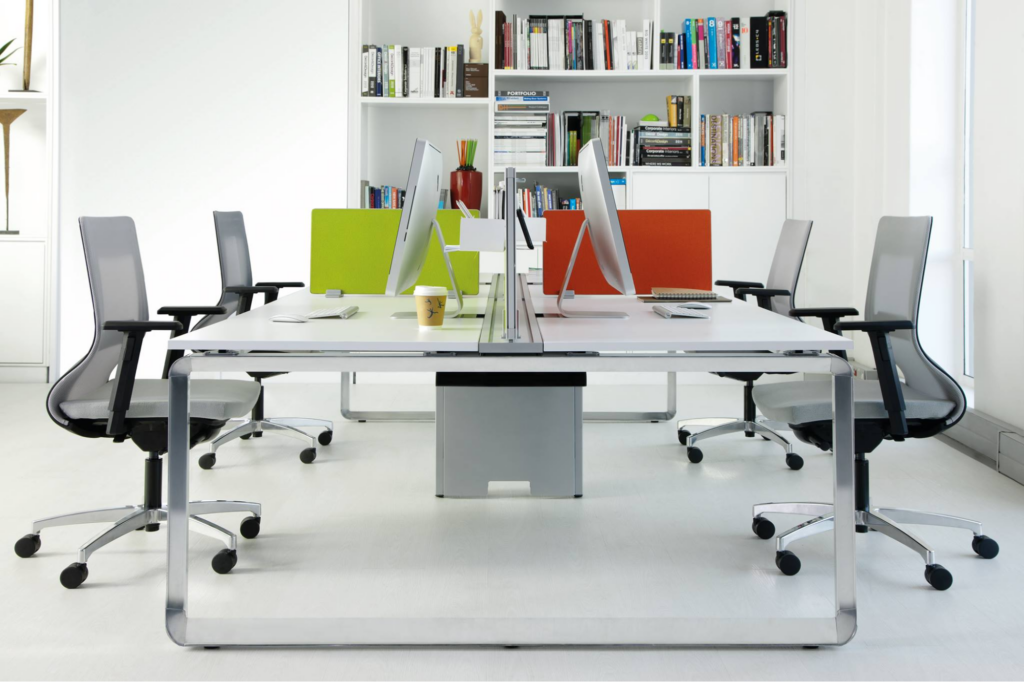
The furniture layout is incredibly important in this because, without a more open layout, like a flex space, it’s harder for cross-team collaboration to happen. Flex spaces are important to multiple different kinds of workplaces including education, healthcare, and especially for hybrid workspaces. In these flex spaces, fewer cubicles are there to separate us from our team members, and fewer walls will separate us from other teams on our floor.
It’s a lot easier for collaboration to happen because you can simply walk over to the other team, and there are a lot more choices for where you want to work. There are more official conference rooms or more casual open areas, and if you want to work in a quiet place because there’s a meeting happening right next to you, there are plenty of areas to choose from too.
Comfortability is important to space functionality as well. If people aren’t comfortable, they won’t want to work there. This includes physical, mental, and even emotional comfort sometimes. Things as simple as comfier chairs, desks, and ways to keep your posture up can help tremendously at work. Also getting enough natural sunlight, and having accessible snacks and drinks, like having a coffee bar nearby helps employees stay productive as well. Plus, if the space promotes healthier and happier people, more people will want to be around those people, so more people will want to come in for work, and more people will want to work for your company! So when employees are happy and comfortable, so are businesses.

Colleagues and teams are usually separated in one way or another from each other in an office space. Either that’s by a cubical or an entire wall. Open layouts get rid of this problem by creating an open and more collaborative environment for colleagues to more easily work together, as well as various teams. These spaces can be created by having lounge spaces, and more common areas.

Workplace design is essential to the success of a business because it makes workers happier and more satisfied, in turn making the whole office more productive. Employees will feel more comfortable and healthier with more opportunities for collaboration, more say in where and how they work, and better overall well-being.
It can be hard to visualize exactly how you want your space, but we have a virtual showroom on our website that you can check out to help with that. There, you will see several elements for design and space planning including where conference rooms, desks, and collaborative spaces are. Designing your office space doesn’t have to be hard, and with the right tools, it can even be enjoyable.
As we all know, the pandemic has changed so many things in so many individuals' lives, including how daily tasks get completed, how we work, where we work, etc., and this is the same for the way post-pandemic office interior design. The pandemic created new needs for offices regarding functionality and design, highlighting aspects of workspaces that aren't necessary anymore.
When it comes to work-life after the pandemic, it is clear that the way individuals work has completely changed. We've gone from working 9-5 jobs in an office space to being entirely remote for a new mix of the two: some at home, some in the office, and some hybrid. With this unique working style, the way offices are designed has changed to meet the needs of many different aspects that were previously overlooked.
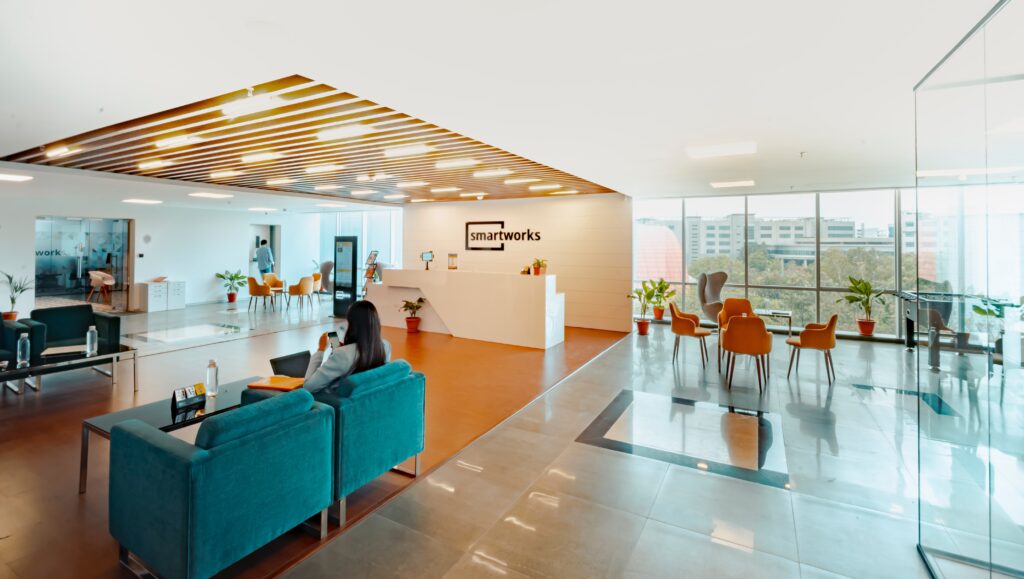
Trends emerge as businesses redesign their spaces to maximize workplace productivity and efficiency. Office interior designs have changed from a multitude of individual workspaces to a larger group conference format. With many individuals being hybrid employees, the need for individual spaces has decreased, turning those in-office days into days, most workers participate in office-wide meetings. Office spaces have also evolved in the creative aspect. Many studies have shown that being in an environment that promotes learning and creativity and feels comfortable is essential to workers' development and mental health. This might include adding new perks to being an employee, such as a gym membership, team-building exercises, comfortable and practical office space designs, etc. Office spaces are evolving post-pandemic, so keep reading to find out how they’ve been redesigned and the benefits of doing so.

1. Increased space explicitly designed for the collaboration of team members
As stated above, many businesses are redirecting their attention to creating more collaboration spaces instead of individual offices due to the fact that many were isolated from others during the pandemic, and with an increase in remote workers, collaboration spaces are a great way to socialize on their days in the office.
When at home, they can complete tasks they would initially complete in their office or cubicle, but now in the office, they can generate new ideas amongst one another and participate in meetings. Often businesses will also add lounge spaces to foster socialization and creativity without the pressures of achieving a work goal while in this space.
Collaborative spaces have helped employees achieve a better sense of community within their workplace environment, and studies have shown that team members who work in these spaces are 17% more satisfied with their job.

2. Sound masking and workplace background noise
With Zoom and video conferencing becoming so prevalent due to the pandemic, offices feature spaces that allow for a quiet area to participate in video conferencing with little to no distractions. These rooms are a great place to interact with those who are at home or aren't in the office, even though some employees may be.
It offers a quiet and convenient workspace to get things done, even if you aren't video chatting. Many offices have nailed down the acoustics for such rooms, and sound masking is a great tool to install to make all employees feel protected and comfortable.
Sound masking is when sound is installed in a way designed to mask other, more distracting noises. The noise is engineered to match the frequency of human speech to provide more privacy. Employees feel more protected with sound masking, which is a great improvement in itself. It helps drown out distractions to allow employees to complete higher quality work and protect speech privacy, making it a standard new installation in many post-pandemic office projects.

3. More comfortable environments
As people had to ditch the office and make do at home, individuals expressed how they enjoyed working from home and felt more comfortable in that environment. A study even found that remote workers were 22% happier than workers who work in the office. Due to this, businesses have adapted their office spaces to feel more home-like and comfortable to enable employees to get work done more effectively. This may include sofas in a lounge space, increased snacks around the office, more residential-style furniture, an increase in foliage, etc., all of which are aimed at making employees feel more at home and increasing productivity and creativity.
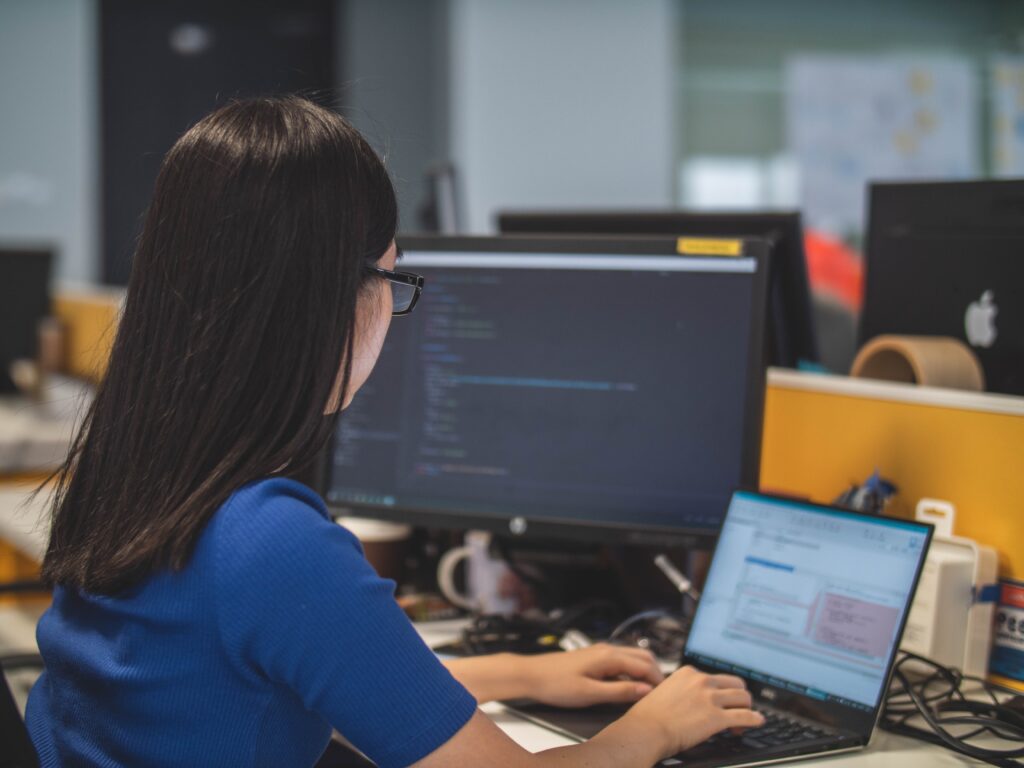
4. Increased focus on employee health and wellness
With the pandemic raising awareness of health and wellness within our lives, office spaces have begun to reflect that need for a healthier environment for their employees. Increased safety measures have been introduced, such as more hand sanitizer stations, designated spaces to eat during work hours, enhanced ventilation systems, and even reminders to keep spaces clean and tidy.
Offices have also begun designing spaces and workplace benefits that promote focusing on mental health and wellness. These may include more natural lighting, spaces where individuals can work in private, access to a gym or outdoor space for physical activity, and mental health workshops.

94% of employees who work in workplaces that have introduced mental health workshops have said they have been effective, and 45% report they have been very effective. Natural lighting can boost morale and energy levels, as 47% of employees working in offices with little natural lighting have reported feeling more tired. These up-and-coming modernized designs have shown major impacts on the overall health of employees.
Overall, office space designs have changed since 2020, which is a good thing. These new post-pandemic spaces promote comfort, creativity, and efficiency, all while putting a new focus on employees' health and wellness.
The pandemic has shown us new ways of working, whether it’s full-time in the office, hybrid, or at home, and it has done a great job of emphasizing the importance of an office space that is more than just desks and cubicles.
If you want to upgrade your office space, head to Workplace Integration's website now to achieve the workplace of your dreams!
Over the last decade or two, office space trends have come and gone. Years ago, we saw a decrease in the number of cubicle-farm space designs, and we saw an increase in open floorplan layouts. More recently, we have seen the introduction of fitness centers and ping-pong tables for leisurely activity in the workplace. However, a workplace design that promotes employee health and well-being will never go out of style.
Many people spend more time at their offices than in their homes. That said, a quality workspace that prioritizes employee mental and physical health is of utmost importance. A well-designed, quality office environment can lead to calmer, more comfortable employees and, ultimately, more productive employees. Proper lighting, flexible workspaces, and using colors strategically can make employees feel valued, motivated, and productive.
It is completely worth it if you are thinking of investing in proper design planning for a new office, redesigning your current workspace, or updating your layout and space usage. Happy employees make for happy business owners too.
Here are 10 simple interior design elements that can enhance productivity in your office!
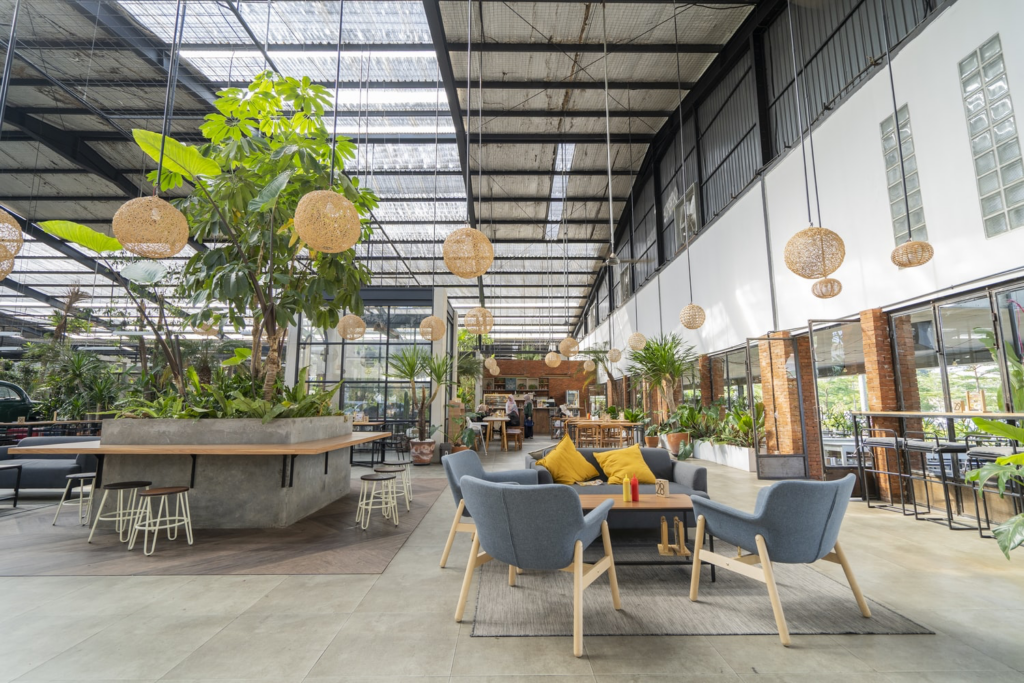
Allowing outside light to shine and filter through your office space can help connect you to the outside world when so much of your day is indoors. In addition, research shows that employees who sit closer (within 10 feet) of a window have 84% fewer eyestrains, headaches, and blurred vision. With so much of our work being done on computers, any effort to save your eyes will help.
Look at moving bulky furniture that blocks sunlight from windows or adding a skylight within your office space layout. If it is impossible to bring true, natural light into your office space, consider replacing flickering lights and opting for ambient lighting over fluorescents.
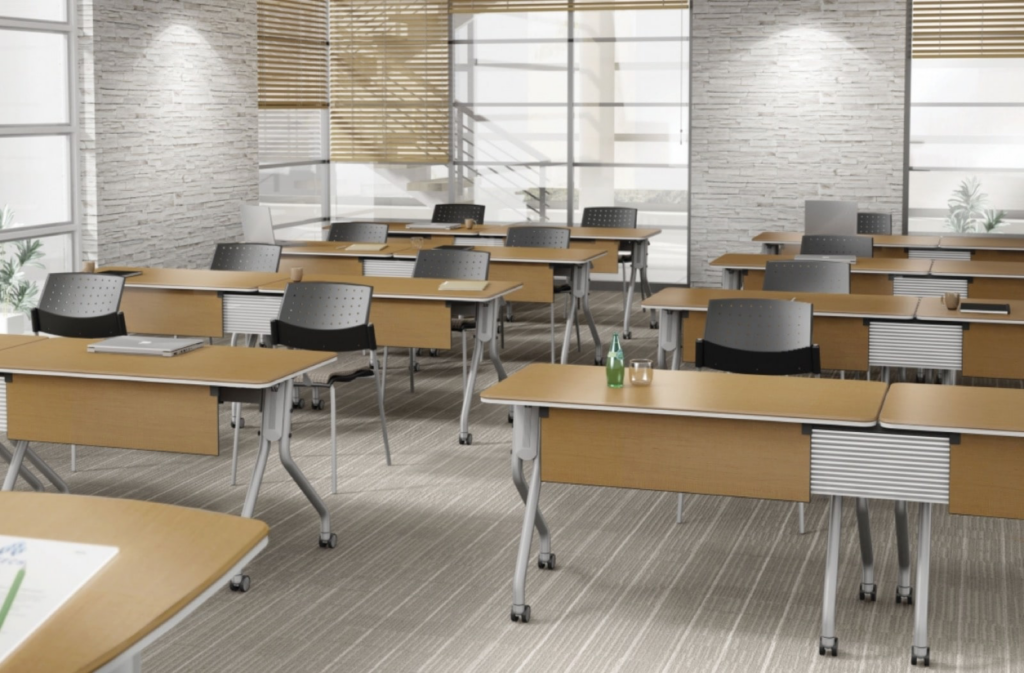
Back pain is a norm in today’s society, but not a lovable one. Adjustable chairs and computer risers can reduce the physical pain that comes with the computer-work lifestyle that takes away from productivity in the workplace. Each individual is unique. Having the ability to adjust equipment and furniture to the best personal fit will add to employee comfort.
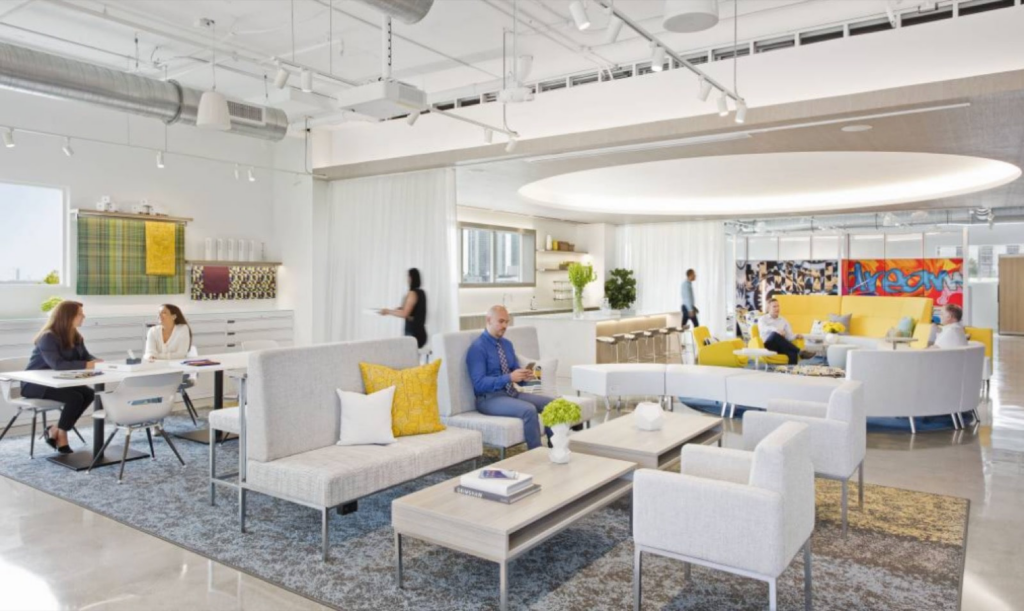
Different workspaces are likely necessary depending on the day, the person, and the type of task at hand. Maybe one-day tasks require community, teamwork, and collaboration in an open environment, but the next day, employees are expected to produce finished products independently.
On any given day, an employee may feel overwhelmed and need a quieter, distraction-free private office for efficiency. Access to multiple rooms, booths, pods, and breakout spaces can help employees fulfill workplace assignments in their desired environment. A simple addition of movable walls or pods will elevate your office's flexibility.

Nobody is made to live a sedentary lifestyle. Very few people produce “great” work by just sitting in a chair all day. Since exercise and activity release endorphins, increase blood flow to the brain, and cause higher energy levels and more alertness, employees are often more productive when participating in physical activity.
To have the most productive workers, companies should encourage basic workplace movement by adding the following to their design layout: a gym, showers, accessible stairways, walkways outside the building, and bicycle storage.
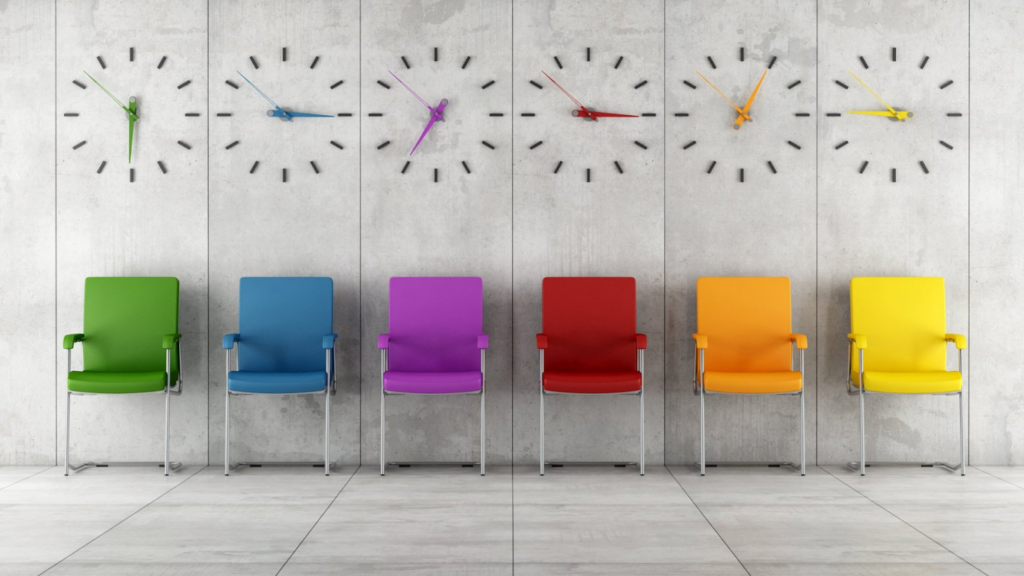
Behind every color, there is a deeper meaning or emotion it provokes. Color psychology is important in the workplace. For example, neutrals and blue shades bring about feelings of composure and concentration, while yellow is known to boost creativity. To each company, their own, but in most cases, office designers tend to lean towards blues and greens to boost efficiency, as they resemble the outdoors and activity.
Nevertheless, attention must be paid to the color scheme. It should be implemented strategically because it can greatly affect employees’ ability to focus and stay focused throughout the day.

Privacy will be necessary at some point no matter what type of organization you work for. Noise is the highest-ranked disturbance factor in the workplace. Hearing co-workers’ conversations, music, phone calls, or the hustle and bustle of the surrounding city can overwhelm employee productivity. The ability to focus is severely impacted by unwanted noise.
To avoid drops in productivity caused by office noise, try sound masking by installing a sound masking noise system that incorporates unobtrusive sound into an environment to 'mask' disruptive environmental noises. Consider providing employees with sound-canceling devices and white-noise machines if this is out of reach.
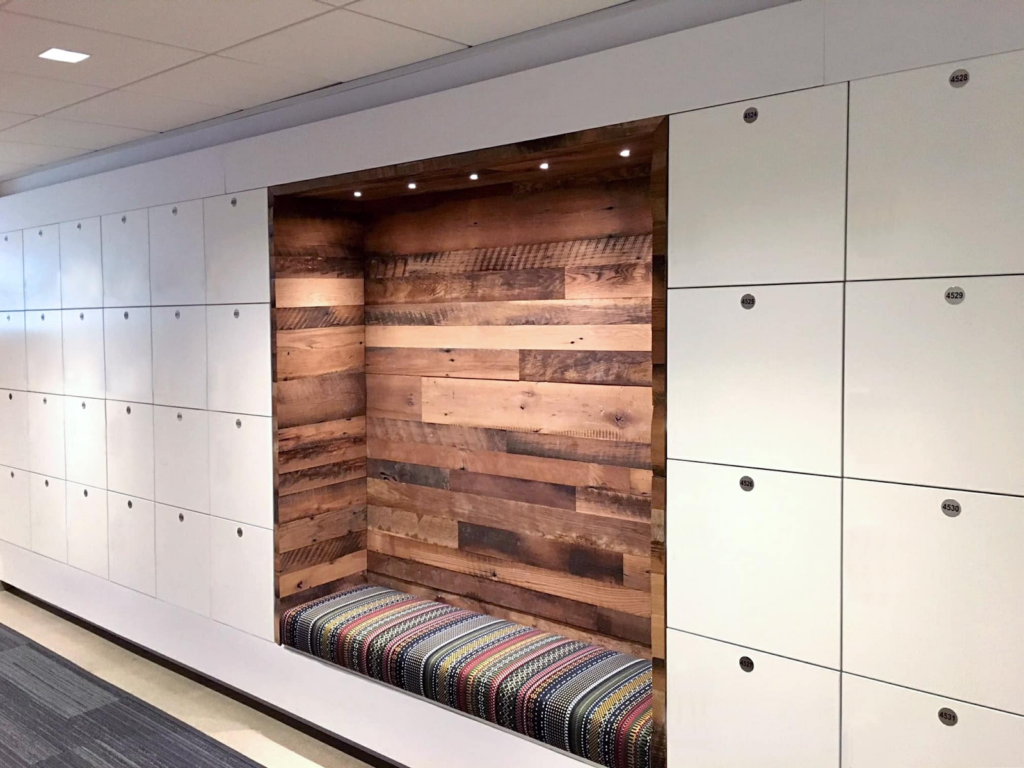
Clutter is a distraction. Design your office in a way that allows floor and desk spaces to be clear of extra items to keep employees at ease. De-cluttering and organizing the workstation makes finding needed items much more feasible. Add storage lockers, file cabinets, drawers, and coat racks to do so.
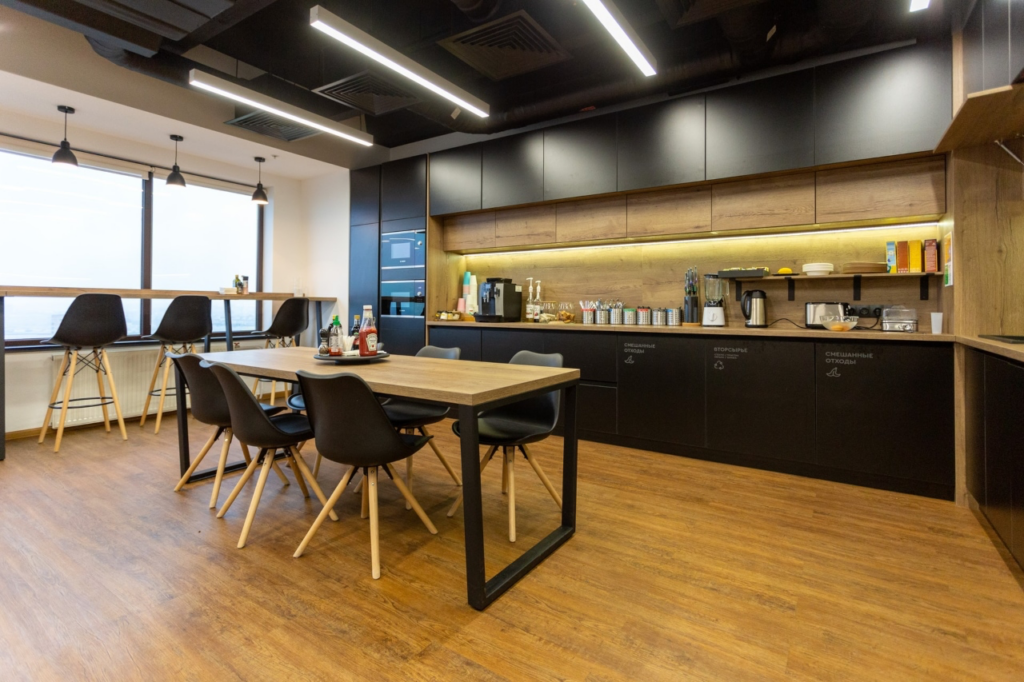
Undoubtedly, our energy levels drop significantly when we don’t fuel our bodies adequately. Providing employees with a separate kitchen space to grab a quick snack or warm up a healthy lunch will help to keep employees aware and alert leading to more productivity.
By improving access to nutritious snacks, like fresh fruits and vegetables, making nutritional information available, and promoting mindful eating, employees will experience a boost in energy levels and optimized work performance.
Not only is food for fuel important for our overall health and working ability, but so is water intake. Adequate water consumption betters sleep and clarity of mind. Implementing a drinking fountain or water cooler in the office can significantly improve employee health. A fun way to educate your employees on the benefits of drinking water and encourage their participation is to host a water challenge with prizes for employees who drink the most water during their work day!

Save your employees from the headache of slow Wi-Fi, and provide them with top-tier technology and access to the tools they need to succeed. For example, provide monitors for video calls and whiteboards for creative brainstorming.
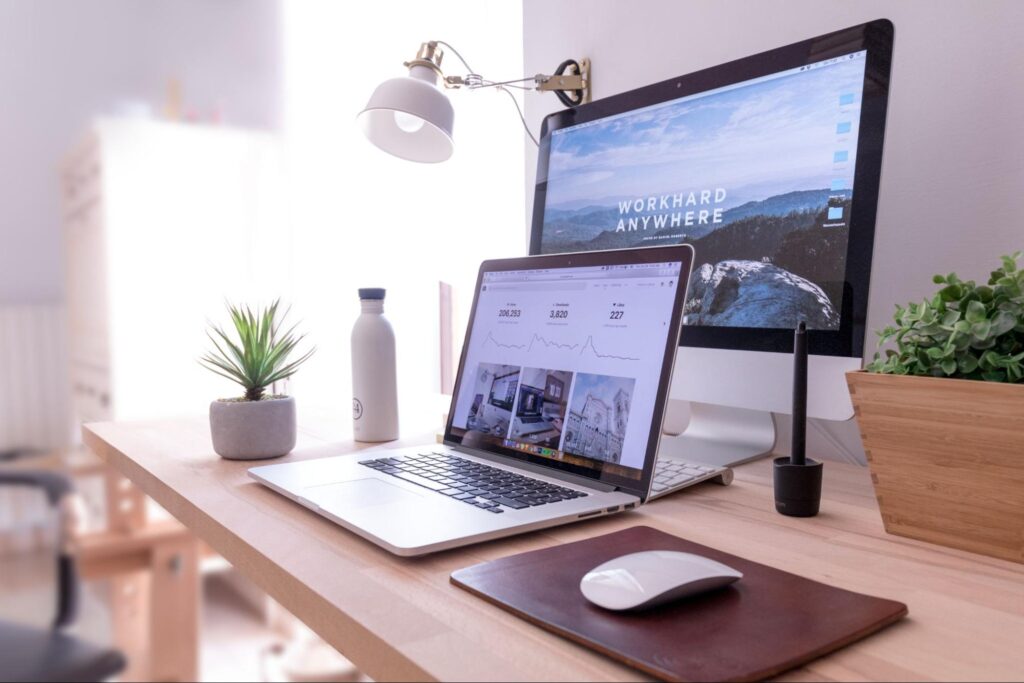
Having the ability to personalize your workplace to showcase the things you love and reflect your personality can impact your engagement and sense of belonging within a company.
Employees can add clocks, artwork, pinboards, or other accessories that align with their values. When designing your office, don’t forget how important this can be. Provide this luxury within reason to keep your workplace design cohesive and aesthetically pleasing.
An article from Forbes states that 93% of tech employees said they would stay longer at a company if the company offered healthier workspace benefits, like wellness rooms, fitness benefits, sit-stand desks, healthy lunch options, and interactive, ergonomic seating.
A comfortable workplace geared toward employee well-being has the potential to greatly increase employees' productivity and, therefore, the overall success of any given company. However, this is impossible without proper office design and layout.
At Workplace Integration, we provide design and space planning, new and used furniture, accessories, and more.
Contact Workplace Integrations today to get started on the journey to making a better, more productive workplace.
Before the pandemic, we saw a huge rise in flex workplaces. Big companies like Google and Pinterest were maximizing their spaces to create almost a home away from home, with so many spaces dedicated to employees' comfort, satisfaction, and productivity. It was visually and socially appealing, making even more people want to work at companies with workspaces like that.
Since the pandemic, people have slowly been returning to work, and flex spaces have been gaining popularity. The Economist talks about this transition and highlights that these workspaces have become more of a place of socialization for employees instead of work, meaning more people like working from home and only come in to work to see colleagues.
In fact, remote and hybrid workspaces have become the most popular choice ever since remote work was the only choice during the height of the pandemic. People love the flexibility of remote and hybrid working, especially in a flexible workspace that fuels their productivity, creativity, and collaboration.

Flex office spaces have plenty to offer. In an article by Hubble HQ, they discuss what flex office spaces do to boost employee productivity, collaboration, and office morale. A flexible workspace provides open-plan designs, which fuels collaboration between departments. This means that something as simple as a wall separating departments no longer exists or that some companies have their entire company in one place where they can easily go from a business space to a warehouse. This kind of design allows the company to be more collaborative because the normal physical boundaries aren’t there.
You can simply walk from the conference room to the warehouse to the coffee bar! Or you can go from the casual, collaborative open space to the more quiet corner to get some work done, which brings us to our next point: quiet areas.
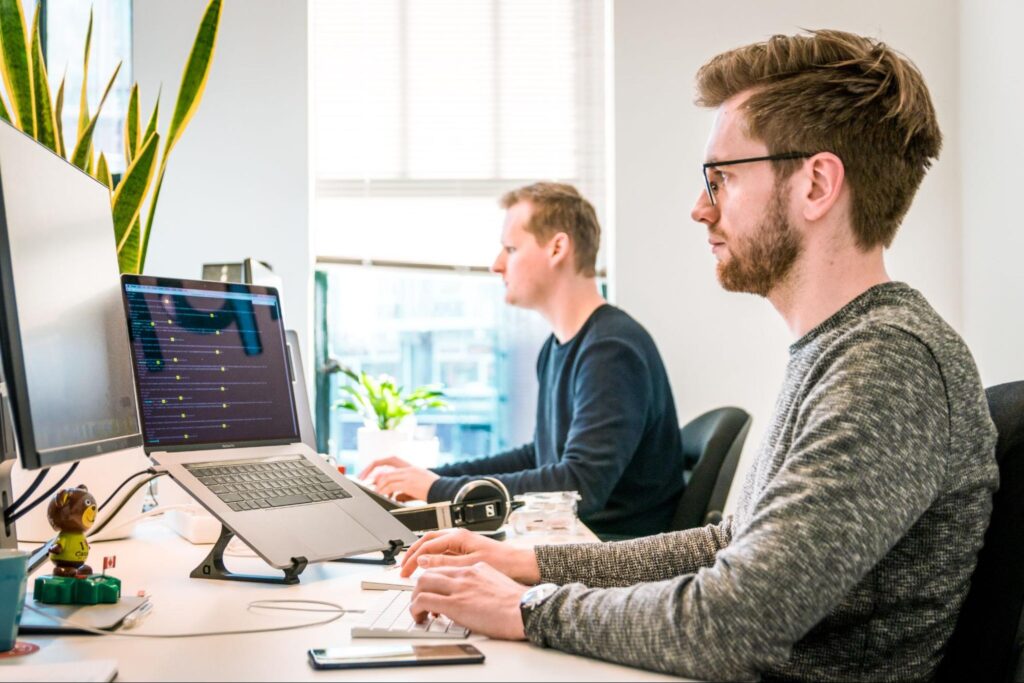
Each flexible workspace has this as well. With an open-plan design comes lots of noise since everything’s open, so this makes it so everyone has somewhere to go if they need a more quiet area. Establishing quiet areas within your workspace design is important to allow for productive task completion when socialization and collaboration are unnecessary.
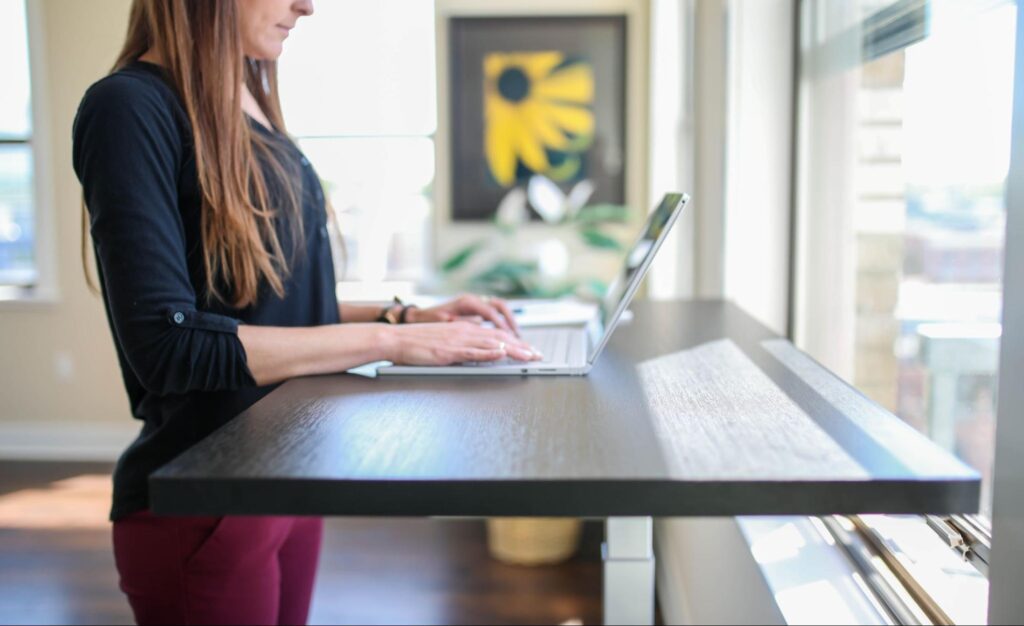
Adaptable workstations are the next factor, which could be a standing desk, or going to the more common areas like a coffee bar to get some work done. These areas also have natural lighting and comfortable chairs, making them even more popular.
lighting and comfortable chairs, making them even more popular.
The last thing is shared amenities. People may hoard things like work supplies and snacks in more traditional office spaces at their desks since it’s only in one area. Shared amenities in a flex workspace make it so that plenty of areas have these amenities, so you don’t have to go too far to get them.
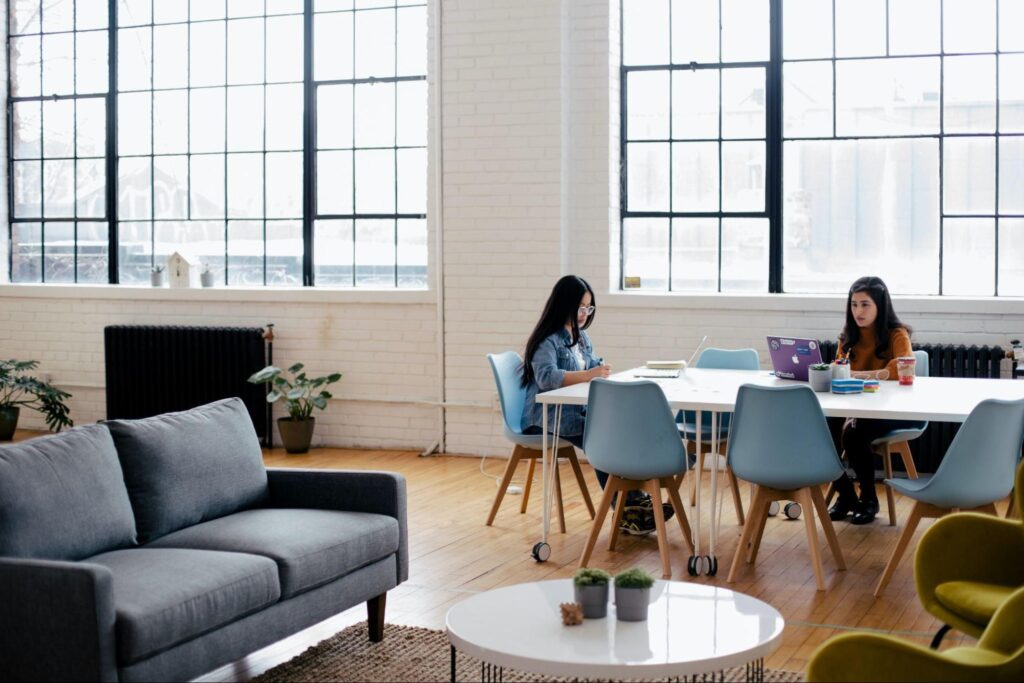
Flex spaces aren’t just popular amongst employees. There’s a reason why companies are adopting these spaces. According to an article from JLL, companies started utilizing flex spaces more for several reasons, including increasing portfolio flexibility, reducing occupancy costs, and enhancing collaboration.
The article by JLL talks about how flex spaces allow companies to reduce occupancy costs, increase productivity during growth periods, avoid fixed long-term leases, provide room for staffing flexibility, give protection from rapid changes in the market, and simplicity when it comes to new market measures.
This makes converting to a flex space a win-win for businesses and their employees. Employees get more say in how they will work, and businesses get increased productivity. These are the reasons why flex spaces are becoming popular, along with their popularity online, where employees are posting about how much fun they have working for companies that utilize this kind of workspace.
We’re beginning to see workplace designs like this everywhere, from the healthcare field to areas of education, and WPI offers designs perfect for a hybrid workforce.
We offer design and space planning, workplace moves, furniture services, and more to create your perfect flex workspace. Our website also has a feature that lets you get a virtual tour of our showrooms.
These tools on our website can help companies visualize their plan to convert their space into a flex workspace and proceed with lots of help along the way. Flex spaces don’t seem to be going anywhere anytime soon, and we’re here for it!
Have you ever been in a situation where you are trying to get work done, but there is just so much noise around you that you can’t fully concentrate? Or do you just not feel like you have speech privacy in your space?
Sound masking is the perfect solution to any environment with noise or speech privacy as an ongoing issue! You might be asking yourself, “What is sound masking? Is it the same thing as noise canceling?” We’ll dive into these very common questions below.
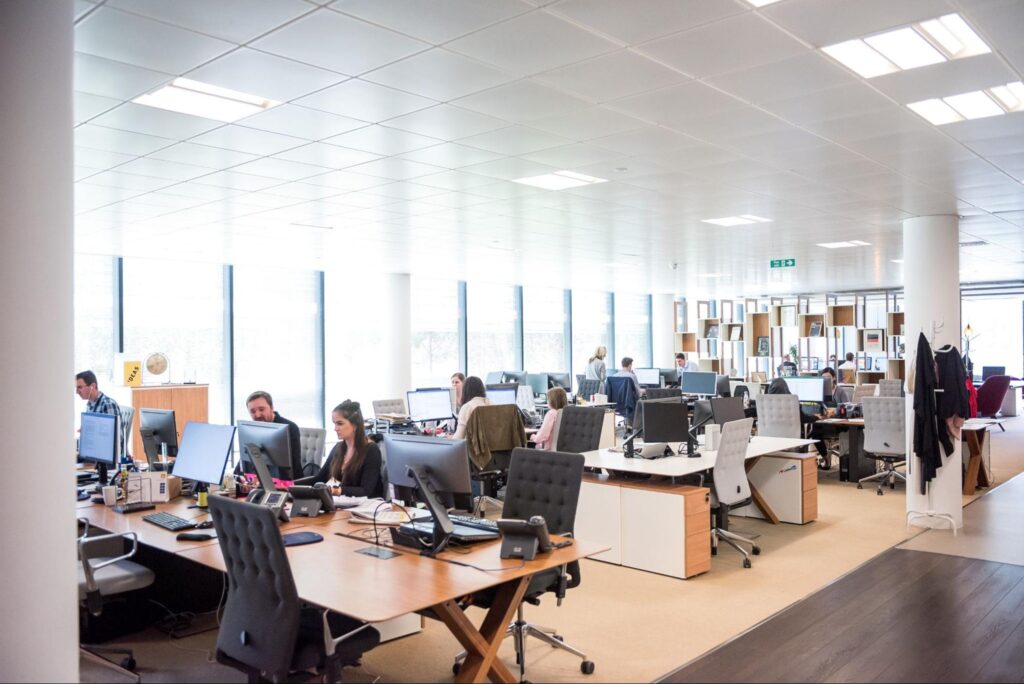
According to Cambridge Sound, Sound masking is the process of adding background sound to reduce noise distractions, protect speech privacy and increase office comfort. The background noise typically is an ambient sound engineered to drown out unwanted sounds and protect speech privacy, which encourages the noise you want to hear, whether that is another person, music, a video, etc., and helps you feel more secure when speaking.
A great example of sound masking noise is when you are doing the dishes and conversing with someone, but the sound of the running water drowns out their voice. Another example could be when you’re walking down the street on a phone call, but a noisy truck drives by, and your voice gets masked over the phone.

Sound masking and noise canceling are not the same, even though many believe they are. Sound masking is the addition of a new noise created to mask unwanted noise, while noise-canceling uses certain technologies to completely cancel out noise without adding new noise. They aim for a similar result but are engineered differently.
People also often ask if sound masking is the same as white noise, which it is not. White noise typically is loud and resembles static of some sort, which can become irritating fairly quickly, while sound masking is meant to mimic human speech frequency, creating a pleasant noise that most people don’t even recognize is being emitted.

In a workplace setting, there is nothing worse than disruptive noise while attempting to get work done, which is why sound masking is the perfect option in a work environment.
When it comes to employees' biggest concerns in the workplace, 28% said excessive noise was their biggest concern, and the other 68% said speech privacy was their main concern. A sound masking system can control both of these typical disruptions in an office, making it a great option for businesses to help employees feel more comfortable. It also has shown that sound masking in the workplace increases productivity by a minimum of 2-4%!
Places in a workplace setting where office sound masking is effective:

Sound masking is the perfect solution to a noisy library or study room by drowning out unwanted distractions. Minimizing distractions in an educational setting is important, as students are less productive in a space with constant interruptions.
Places in an educational setting where sound masking is effective:
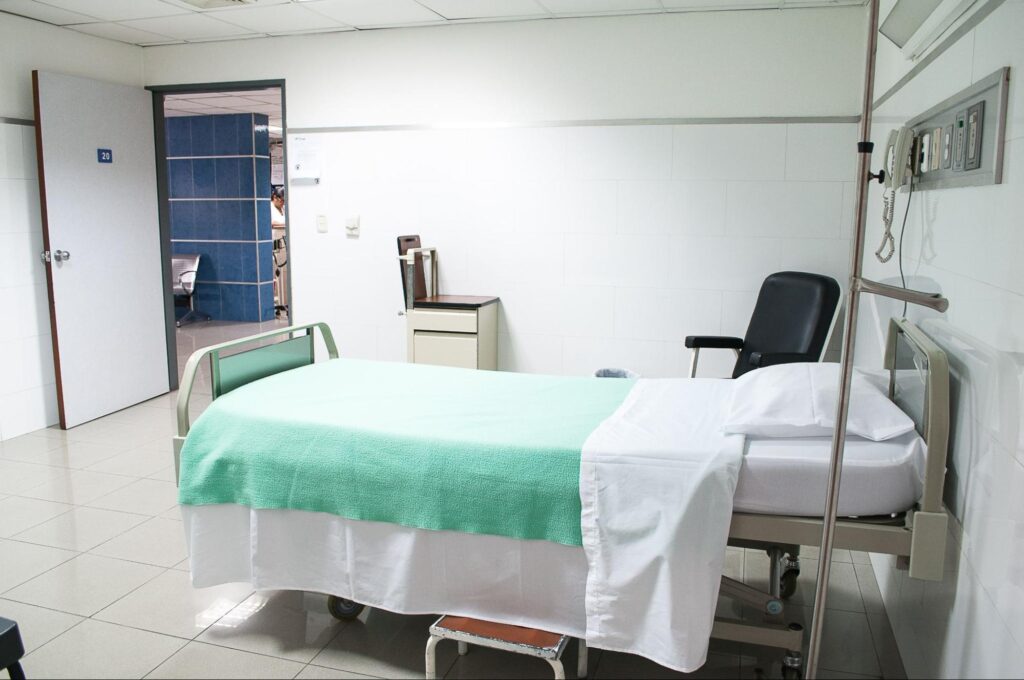
Hospitals are another important place to implement sound masking due to high patient volumes and overnight services. A hospital is full of noise, and patients are worried about their privacy, so sound masking is a great solution when helping patients feel safe and comfortable during their stay.
Hospitals with a sound masking system installed give their patients the ability to sleep better and recover more quickly. It also helps enhance patient privacy, which is important in a hospital setting.
Places in a hospital setting where sound masking is effective:
In most instances, sound masking speakers are installed above the ceilings in the space to keep them out of sight and are typically placed 15 feet apart. The exact spacing depends on numerous factors within the space they are being installed, such as ceiling tile thickness, the height of the ceiling, space above the ceiling, etc., and these factors also dictate what frequency and volume of sound is emitted from the sound masking speakers.
These speakers can either be installed facing toward the office space, which is direct sound masking, or facing away from the office space, which is indirect sound masking.
The difference between the two types of sound masking besides the direction of the speakers is that with direct sound masking, there typically is less of a need for tuning of the speakers, while indirect masking usually requires a more intense installation, as the sound is meant to hit above and bounce back towards the space, and tuning is crucial to make sure the noise is pleasant and effective.
Here at Workplace Integration, we specialize in creating workspaces that fit your needs, and if you think a sound masking system would benefit your working environment head to our website now and fill out our inquiry form!
In a recent survey launched by CBRE, 60 percent of respondents say they prefer hybrid working, a mix of in-office and remote working. This change in how people prefer to work, forces companies to embrace these new, more flexible office options. As a result, these newly designed offices can use their spaces as a recruiting tool in their search for new talent. While no one can say for sure how office spaces will evolve, here are some ideas that WPI can help you with:
With more focused work being performed remotely, office spaces have quickly become a place for collaboration. With that in mind, it’s essential to have an interior design that promotes discussion and teamwork in a creative environment. Your workspace design can go a long way in encouraging your employees to work together and get more done.
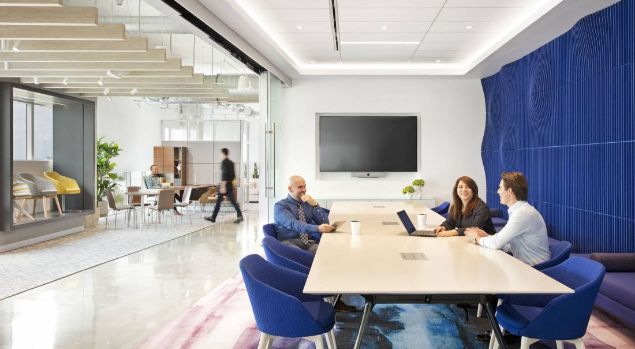
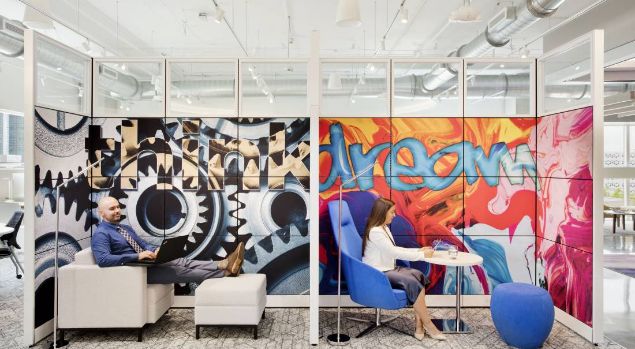
The survey findings created by CBRE indicate that because the office is quickly becoming a space for collaboration, it’s important to view the office as a destination that brings people together. These office spaces can feature unique designs that make it more than a place to work, but a cultural hub that represents the organization’s values. The focus will be on creating collaborative space over individually designated spaces. Based on the survey, respondents expect space for unscheduled catch-ups and communal space for socializing to be areas where demand increases. Larger meeting spaces may be less in demand due to individuals in the meeting being in different locations. Employees want connection and community within their team, and the hybrid setup is the perfect way to achieve it.
The importance of workplace safety and hygiene has been present ever since the pandemic. Many employees want contactless interactions and workspaces that allow them to have separation. Offering touchless technology and available separate space goes a long way in helping employees feel safe.
The design of a workplace can make a significant difference in the culture and connectivity of your team. An office with a clear strategy will help employees feel like they matter, making for a more engaged team. In addition, an organization that shows care for its team is often one that attracts a much greater amount of new candidates.
WPI can help your organization exponentially improve your team’s culture and collaboration through our ability to create and source the perfect design and furniture for your office. So if your office is still stuck in the past, and you’ve found more potential candidates looking for a hybrid office, give us a call today!
New design strategies in the world of healthcare are creating positive experiences and interactions between patients, caregivers, and technologies. There is a growing focus on merging virtual and in-person care. As the world continues to change, new factors and expectations in the world of healthcare are shifting the types of designs that effectively bring people together.
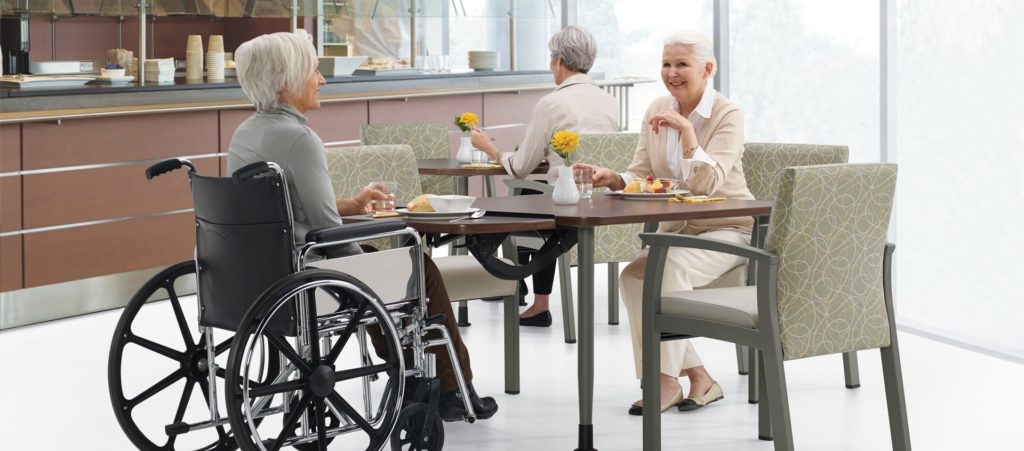
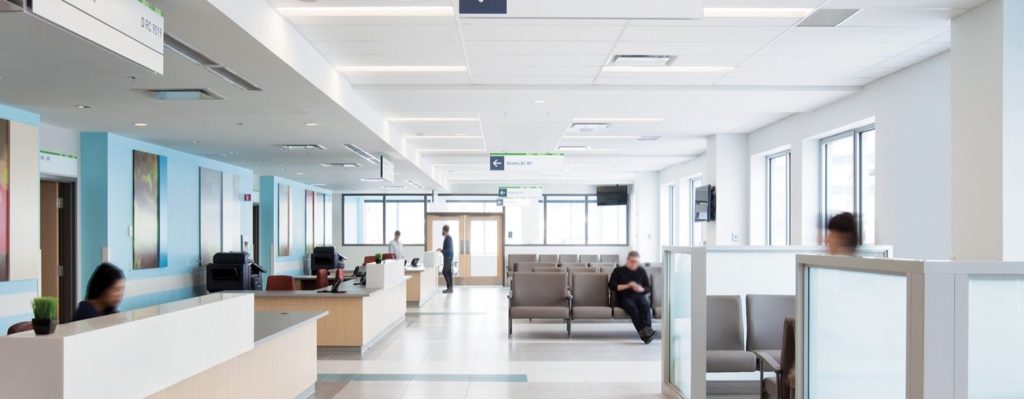
During the pandemic, the use of telehealth services spiked tremendously. Even so, the healthcare field will always be primarily dependent on in-person interactions. Therefore it is important that the design of these spaces promotes safety and sensitivity to the patients seeking care. While these variations in care will continue to integrate, it will be impossible for all the up and coming technologies to all be implemented in a facility at the same time. That is why it is vital for healthcare spaces to be flexible, allowing future advancements the room they require.
The healthcare industry is the perfect example of a place that needs a dynamic space for current comfort and future growth. At WPI, we have the ability to help you plan your space and source the materials you need to be prepared for whatever the future may have to offer. Healthcare facilities often struggle with finding furniture that balances comfortability, maneuverability, and space efficiency. We proudly support hospitals, clinics, doctors' offices, nursing homes, and so many more healthcare facilities, offering comfort and support to all who occupy them.